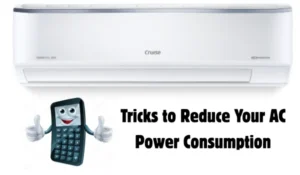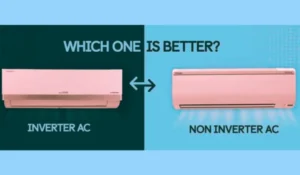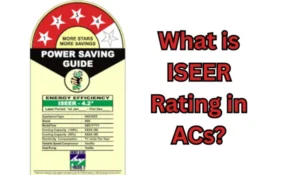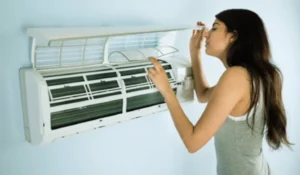When I first installed my air conditioner in 2017, I asked myself the same question you’re probably asking today:
“Do I really need a voltage stabilizer for my AC?”
Back then, I had a 1.5-ton non-inverter AC in a second-floor apartment in Delhi. With frequent voltage fluctuations, the thought of spending ₹2,000–₹3,000 extra on a stabilizer felt like overkill. But after two summers of power dips and an expensive compressor repair, I changed my mind forever.
In this post, I’ll walk you through everything I’ve learned and tested as a tech and electronics expert, backed by practical experience and insights from trusted sources like BIS, ISI standards, and manufacturer recommendations.
⚡ What Does a Voltage Stabilizer Do?
Before we jump into whether your AC needs one, let’s understand the basic function.

A voltage stabilizer maintains a steady output voltage to your appliance even if your home’s input voltage fluctuates. It protects your AC’s compressor, PCB, and motors from damage due to:
- Over-voltage (above 240V)
- Under-voltage (below 180V)
- Sudden surges or spikes
Think of it like a power bodyguard for your expensive appliance.
🔍 Inverter AC vs Non-Inverter AC: Who Needs a Stabilizer More?
When I upgraded to a 5-star inverter AC in 2022, the technician told me, “Sir, inverter ACs don’t need stabilizers—they have built-in protection.” But here’s what I found when I dug deeper:
✅ Inverter ACs
Modern inverter ACs from brands like LG, Daikin, Voltas, and Panasonic do come with built-in voltage protection, but only within a limited voltage range—usually between 145V to 290V.
If your area regularly experiences voltage below 140V or above 300V, the internal circuit can fail, and replacing the inverter PCB can cost you ₹6,000–₹10,000.
My Experience:
In 2023, during a thunderstorm, the voltage spiked above 290V. My inverter AC (which didn’t have a stabilizer) shut down, and I had to call service to replace a blown circuit. That cost me ₹6,500—and a full week without cooling!
❌ Non-Inverter ACs
These don’t have internal voltage control and absolutely need a stabilizer. Frequent power drops can damage the compressor beyond repair.
In short:
- Inverter AC – Safer, but may still need a stabilizer in high-fluctuation zones.
- Non-Inverter AC – Definitely needs a stabilizer for long life.
📉 How Voltage Fluctuations Damage ACs
Most people don’t realize that 90% of AC damage is due to unstable voltage, especially during:
- Summer peak load hours
- Storms or power grid shifts
- Generator auto switchovers
- Rural and semi-urban areas with old wiring
These dips and surges can:
- Burn out the compressor windings
- Damage control boards
- Cause frequent breakdowns and reduce lifespan
👉 That’s why major brands recommend external stabilizers in their user manuals even today, especially in Indian regions prone to voltage swings.
🛠️ How I Solved It: Stabilizer + Surge Protector
After that costly incident, I finally installed a V-Guard VG 400 stabilizer with surge protection for my inverter AC. Here’s what I noticed:
- The AC now runs consistently, even during voltage dips below 160V.
- The stabilizer cuts off power instantly during dangerous surges, protecting internal components.
- My AC hasn’t had a single electrical failure in 18+ months.
💡 Pro Tip: Choose a stabilizer with time-delay function and thermal overload protection. These features give the compressor time to balance itself after power resumes.
📦 Do You Really Need One? Let’s Find Out
Here’s a checklist to help you decide if your AC needs a stabilizer:
| Question | If YES, You Need a Stabilizer |
|---|---|
| Do you live in a rural or semi-urban area? | ✅ |
| Do you face frequent power cuts or low voltage? | ✅ |
| Is your AC non-inverter or older than 5 years? | ✅ |
| Do you experience lightning storms or surges? | ✅ |
| Does your inverter AC’s manual recommend one? | ✅ |
Even if you answer yes to just 2 out of 5, I highly recommend installing a stabilizer. It’s a small investment that protects your ₹40,000–₹60,000 appliance from unpredictable electrical damage.
💸 Cost of Stabilizer vs Cost of Damage
| Item | Approximate Cost |
|---|---|
| Good Stabilizer (1.5 Ton AC) | ₹2,000–₹3,500 |
| Inverter AC PCB Replacement | ₹5,000–₹10,000 |
| Compressor Repair | ₹7,000–₹15,000 |
| Peace of Mind | Priceless 😉 |
🧠 Final Tips from My Personal Experience
- Buy a stabilizer that matches your AC’s tonnage. For 1.5 ton, a 4kVA model is ideal.
- Choose brands like V-Guard, Microtek, Monitor, or Everest—they’re reliable and ISI-certified.
- Mount the stabilizer safely on the wall, and keep it away from water or dampness.
- If your stabilizer is older than 7 years, get it tested or replaced—it might not function properly anymore.
✅ Final Verdict: Does Your AC Need a Stabilizer?
If you’re using an inverter AC in a stable electricity zone, you might be safe—but only within its voltage tolerance range. For everyone else, especially non-inverter users, a stabilizer is not optional—it’s essential.
Trust me, after paying for expensive repairs, I can confidently say:
It’s better to spend ₹2,500 today than ₹10,000 tomorrow.
💬 Need Help Choosing a Stabilizer?
Drop your AC model, tonnage, and location in the comments, and I’ll recommend the right stabilizer for your setup based on my field knowledge.



